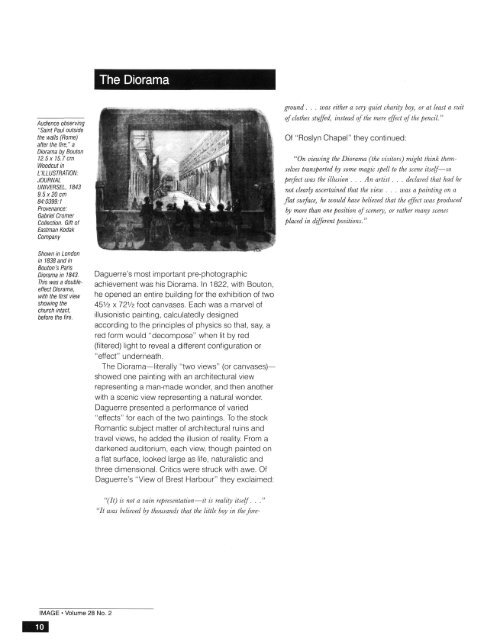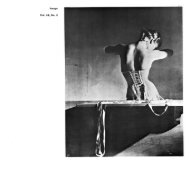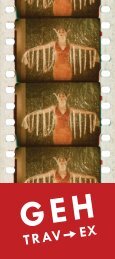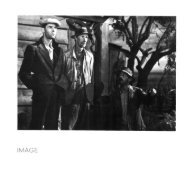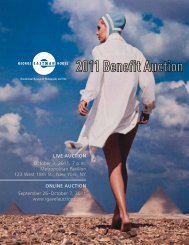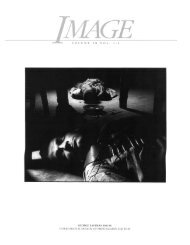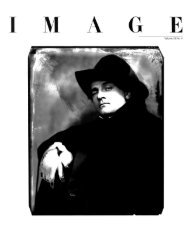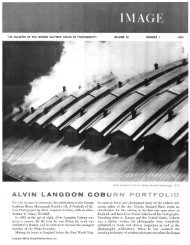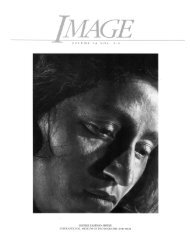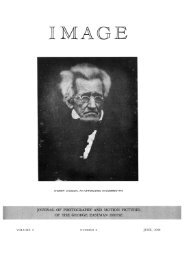Table of Contents - Issues of Image Magazine - George Eastman ...
Table of Contents - Issues of Image Magazine - George Eastman ...
Table of Contents - Issues of Image Magazine - George Eastman ...
You also want an ePaper? Increase the reach of your titles
YUMPU automatically turns print PDFs into web optimized ePapers that Google loves.
The Diorama<br />
"(It) is not a vain representation—it is reality itself. . .<br />
"It was believed by thousands that the little boy in the foreground<br />
. . . was either a very quiet charity boy, or at least a suit<br />
<strong>of</strong> clothes stuffed, instead <strong>of</strong> the mere effect <strong>of</strong> the pencil."<br />
Of "Roslyn Chapel" they continued:<br />
"On viewing the Diorama (the visitors) might think themselves<br />
transported by some magic spell to the scene itself—so<br />
perfect was the illusion . . . An artist . . . declared that had he<br />
not clearly ascertained that the view . . . was a painting on a<br />
flat surface, he would have believed that the effect was produced<br />
by more than one position <strong>of</strong> scenery, or rather many scenes<br />
placed in different positions."<br />
Daguerre's most important pre-photographic<br />
achievement was his Diorama. In 1822, with Bouton,<br />
he opened an entire building for the exhibition <strong>of</strong> two<br />
45 1 /2 x 72 1 /2 foot canvases. Each was a marvel <strong>of</strong><br />
illusionistic painting, calculatedly designed<br />
according to the principles <strong>of</strong> physics so that, say, a<br />
red form would "decompose" when lit by red<br />
(filtered) light to reveal a different configuration or<br />
"effect" underneath.<br />
The Diorama—literally "two views" (or canvases)—<br />
showed one painting with an architectural view<br />
representing a man-made wonder, and then another<br />
with a scenic view representing a natural wonder.<br />
Daguerre presented a performance <strong>of</strong> varied<br />
"effects" for each <strong>of</strong> the two paintings. To the stock<br />
Romantic subject matter <strong>of</strong> architectural ruins and<br />
travel views, he added the illusion <strong>of</strong> reality. From a<br />
darkened auditorium, each view, though painted on<br />
a flat surface, looked large as life, naturalistic and<br />
three dimensional. Critics were struck with awe. Of<br />
Daguerre's "View <strong>of</strong> Brest Harbour" they exclaimed:<br />
10<br />
IMAGE • Volume 28 No. 2


